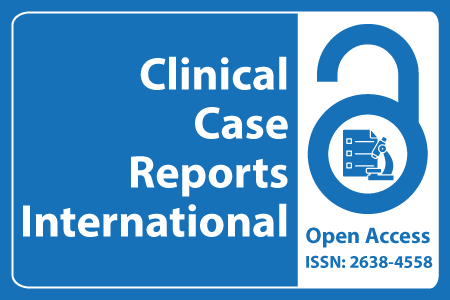
Journal Basic Info
- Impact Factor: 0.285**
- H-Index: 6
- ISSN: 2638-4558
- DOI: 10.25107/2638-4558
Major Scope
- Anatomy
- Nursing
- Hepatitis
- Physical Medicine & Rehabilitation
- Atherosclerosis
- Palliative Care
- Veterinary Sciences
- Vascular Medicine
Abstract
Citation: Clin Case Rep Int. 2023;7(1):1581.DOI: 10.25107/2638-4558.1581
Morphological Changes of Human Brain due to COVID-19: A Review Report
Al Zainuudin WA and Das A
Institute of Clinical Medicine Named After N.V. Sklifosovsky, First Moscow State Medical University Named After I. M. Sechenov, Russia
*Correspondance to: Anushree Das
PDF Full Text Mini Review | Open Access
Abstract:
COVID-19 pandemic started in Wuhan, Hubei province, China. COVID-19 affects the organs and organ systems including the lungs and heart in patients all over the world. The human brain’s interaction with this virus is a topic of great importance to the modern medicine. The texts were selected through word search in the Google Scholar search engine where it was thoroughly and painstakingly analyzed, reviewed and selected for the report. This report focuses on the structural pathologies of the brain reported in patients affected by SARS-CoV-2 virus around the globe. The pathologies henceforth described relate to grey matter thickness, the global brain size, tissue contrasts in the orbitofrontal cortex and parahippocampal gyrus, brain white matter hyperintensities on MRI and hypodensities on CT, microhemorrhages, hemorrhages and infarcts, white matter abnormalities in bilateral anterior and posterior cerebral white matter; leukoencephalopathy, leukoaraiosis (a pathological appearance of the subcortical white matter of the brain during neuroimaging), intracerebral hemorrhagic lesions, signal abnormalities located in the medial temporal lobe, atherosclerosis in the brain acute hypoxic injury in the cerebrum, and cerebellum. In conclusion, the most frequently reported incidences of morphological pathologies in the human brain related to the virus include the grey matter atrophy in the olfactory-related brain areas. Also common were the incidences of global brain and CSF volume. Less frequent were the reports of microhemorrhages, hemorrhages and strokes. Most frequent MRI findings were signal abnormalities in the medial temporal lobe. Atherosclerosis and brain infarcts were also found in patients with COVID-19 background.
Keywords:
COVID-19; SARS-CoV-2; White matter pathologies; Grey matter pathologies; Olfactory bulb pathology; Leukoencephalopathy
Cite the Article:
Al Zainuudin WA, Das A. Morphological Changes of Human Brain due to COVID-19: A Review Report. Clin Case Rep Int. 2023; 7: 1581.













